
Introduction to PCR (polymerase chain reaction).
- Subject:
- Biology
- Genetics
- Life Science
- Material Type:
- Lesson
- Provider:
- Khan Academy
- Provider Set:
- Khan Academy
- Author:
- Emily Abrash
- Sal Khan
- Date Added:
- 06/02/2016

Introduction to PCR (polymerase chain reaction).
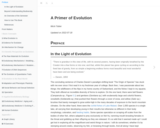
A Primer of Evolution is an open educational resource designed for upper-level college students. It provides a succinct introduction to evolutionary thought revolving around theory, evidence, and practice:
- It introduces some of the theoretical cornerstones and core concepts of modern evolutionary biology. The goal is for students to be able to apply these concepts and articulate testable hypotheses that explain natural phenomena from an evolutionary perspective.
- It highlights the diversity of empirical approaches and lines of evidence that scientists use to address evolutionary hypotheses.
- It helps students to practice approaching problems like scientists and evaluate data to address evolutionary hypotheses. To do so, students learn how to program in R to analyze and visualize data and articulate your interpretations and conclusions.
Each chapter provides a conceptual introduction to the topic and includes R-based exercises that allow students to visualize relevant datasets to practice the testing of evolutionary hypotheses. To help with the R exercises, each chapter also provides additional background on case studies and R programming tutorials that help students to develop the necessary skills.
Chapters:
What Evolution Is
Evidence for Evolution
A Mechanism for Change
The Raw Materials for Evolution
Evolutionary Mechanisms I: Modeling Selection
Evolutionary Mechanisms II: Mutation, Genetic Drift, Migration, and Non-Random Mating
Evolution of DNA Sequences
Evolution of Quantitative Traits
Adaptation and Phenotypic Plasticity
Social Behavior and Sexual Selection
Speciation
Evolutionary Medicine I: Aging and Diseases of Civilizations
Evolutionary Medicine II: Evolving Pathogens
Human Evolution

This course presents the principles of evolution, ecology, and behavior for students beginning their study of biology and of the environment. It discusses major ideas and results in a manner accessible to all Yale College undergraduates. Recent advances have energized these fields with results that have implications well beyond their boundaries: ideas, mechanisms, and processes that should form part of the toolkit of all biologists and educated citizens.

Data Carpentry Genomics workshop lesson to learn how to structure your metadata, organize and document your genomics data and bioinformatics workflow, and access data on the NCBI sequence read archive (SRA) database. Good data organization is the foundation of any research project. It not only sets you up well for an analysis, but it also makes it easier to come back to the project later and share with collaborators, including your most important collaborator - future you. Organizing a project that includes sequencing involves many components. There’s the experimental setup and conditions metadata, measurements of experimental parameters, sequencing preparation and sample information, the sequences themselves and the files and workflow of any bioinformatics analysis. So much of the information of a sequencing project is digital, and we need to keep track of our digital records in the same way we have a lab notebook and sample freezer. In this lesson, we’ll go through the project organization and documentation that will make an efficient bioinformatics workflow possible. Not only will this make you a more effective bioinformatics researcher, it also prepares your data and project for publication, as grant agencies and publishers increasingly require this information. In this lesson, we’ll be using data from a study of experimental evolution using E. coli. More information about this dataset is available here. In this study there are several types of files: Spreadsheet data from the experiment that tracks the strains and their phenotype over time Spreadsheet data with information on the samples that were sequenced - the names of the samples, how they were prepared and the sequencing conditions The sequence data Throughout the analysis, we’ll also generate files from the steps in the bioinformatics pipeline and documentation on the tools and parameters that we used. In this lesson you will learn: How to structure your metadata, tabular data and information about the experiment. The metadata is the information about the experiment and the samples you’re sequencing. How to prepare for, understand, organize and store the sequencing data that comes back from the sequencing center How to access and download publicly available data that may need to be used in your bioinformatics analysis The concepts of organizing the files and documenting the workflow of your bioinformatics analysis

In this module, students use several online databases and bioinformatics tools to study the evolutionary conservation of a protein of their choice. Students are first introduced to amino acid chemistry and to some of the theory underlying sequence comparisons. In the exercises, students:learn how amino acid side chain chemistries are reflected in the BLOSUM62 matrix used to identify conserved regions of protein sequencesuse the BLASTP algorithm to compare two homologous protein sequencesconstruct a multiple sequence alignment that compares homologous proteins from multiple speciesThis module is part of a semester-long introductory laboratory course, Investigations in Molecular Cell Biology, at Boston College.
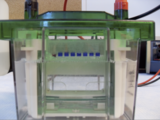
This module introduces students to the theory and practice of sodium dodecyl sulfate polyacrylamide gel electrophoresis (SDS-PAGE). SDS-PAGE provides a simple method for separating proteins in complex mixtures by their molecular weights. At the end of this module, students will:understand the principles that govern protein separation on discontinuous SDS- PAGE gels.be able to cast and run SDS-PAGE gels.be able to analyze the pattern of bands in yeast cell extracts on a stained SDS-PAGE gel.be able to calculate the molecule weight of a protein from its migration on SDS-PAGE gels.This module is part of a semester-long introductory laboratory course, Investigations in Molecular Cell Biology, at Boston College.

I ProteoCool is a an open source with simple but Cool Protocols for newbies in the field of molecular biology and protein chemistry.
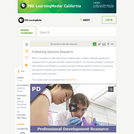
Watch how NJ high school students apply basic principles of molecular biology to solve real research problems, and publish their own genome research at GenBank, the international genomic sequence database.
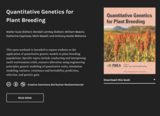
This open textbook is intended to expose students to the application of quantitative genetic models to plant breeding populations. Specific topics include conducting and interpreting multi-environment trials, resource allocation using engineering principles, genetic modeling of quantitative traits, simulation modeling, variance, covariance and heritability, prediction, selection, and genetic gain.
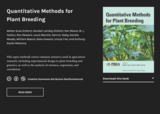
This open textbook covers common statistics used in agriculture research, including experimental design in plant breeding and genetics, as well as the analysis of variance, regression, and correlation.
Each of the books in the PBEA series comes with a section in its back matter titled "Applied Learning Activities" which includes additional content aligned to each chapter such as handouts and worksheets, csv files, code for statistical analysis in R, and recommended readings.

This fun Web site is part of OLogy, where kids can collect virtual trading cards and create projects with them. The site opens by telling kids that people have learned to change the food we eat. The first comic strip looks at a farmer who works to produce a larger, redder, tastier tomato. The second comic strip tells kids about genetic modification and imagines a scientist putting the flounder's "anti-freeze" gene inside the DNA of a tomato. Food for Thought presents kids with two scenarios about genetically modified food, asking them if they think they're good ideas.

In this video segment adapted from NOVA scienceNOW, learn about RNAi's potential to treat a wide range of genetic and infectious diseases.

The ToxMSDT program is providing 6 case study learning modules to toxicology curious students, professionals and the general public.
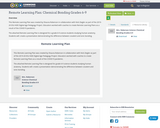
This Remote Learning Plan was created by Shauna Roberson in collaboration with Nick Ziegler as part of the 2019-20 ESU-NDE Digital Age Pedagogy Project. Educators worked with coaches to create Remote Learning Plans as a result of the COVID19 pandemic.The attached Remote Learning Plan is designed for a grade 6-9 science students studying human anatomy. Students will: create a presentation demonstrating the difference between covalent and ionic bonding.

This resource is a video abstract of a research paper created by Research Square on behalf of its authors. It provides a synopsis that's easy to understand, and can be used to introduce the topics it covers to students, researchers, and the general public. The video's transcript is also provided in full, with a portion provided below for preview:
"Does skeletal muscle have a memory? That’s the question researchers from the UK set out to answer in one of their most recent studies. Their finding: Yes, muscle memory is real. But it’s not quite the same type of memory you might be thinking of. This is memory of previous muscle growth—even after a period of muscle loss. The implications for athletes looking to bulk up is clear. But the results could also clue clinicians in on how to help patients retain muscle mass into older age. The researchers analyzed more than 850,000 sites on human DNA, discovering distinct patterns in how genes in these regions were chemically marked or unmarked during periods of exercise or no exercise. One cluster of genes lost its tags during muscle growth following exercise, kept them off after a period of no exercise, and lost even more during a second exercise period. Known as an epigenetic modification, this “untagging of DNA” is associated with switching gene expression on..."
The rest of the transcript, along with a link to the research itself, is available on the resource itself.
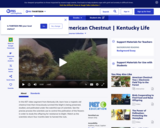
This video segment from Kentucky Life describes how scientists control pollination of one of the few remaining American chestnut trees to develop blight resistant trees.
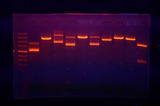
Restriction endonucleases (REs), which recognize and specifically cleave DNA sequences, are part of bacterial defense systems. The exquisite specificities of REs have made them valuable tools in the molecular biology laboratory. In this module, students devise and conduct a strategy to distinguish plasmids by the patterns of fragments generated by RE digestion. Students use agarose gel electrophoresis to resolve DNA digestion products. This module is part of a semester-long introductory laboratory course, Investigations in Molecular Cell Biology, at Boston College.
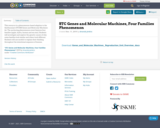
This resource is a phenomenon-based adaption to the Smithsonian's STCMS Genes and Molecular Machines kit. The anchoring phenomenon event features four families (apple, hydra, human and sea star). Students will investigate and explore the genetic causes of why some families look similar and others look different. Students will use models to explain their thinking throughout the intentional sequence of lessons.
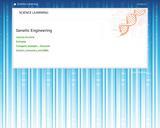
Genetic Engineering interactive learning website that includes:
Journey of a Gene - Learn the steps of genetic engineering to help us make soybeans that are resistant to Soybean Sudden Death Syndrome.
Enviropig - Learn the steps of genetic engineering to help us make environmentally friendly pigs.
Genetic Engineering: Oomycete - Learn the steps of genetic engineering used in the process of developing oomycete resistant soybean.
Farmers, Consumers, and GMOs - The world in which we live is constantly changing. Farmers and consumers need to adapt in order to deal with those changes. The use of genetically modified organisms (GMOs) is one way to help them with adapting. The purpose of this learning environment is to provide the knowledge necessary to assist farmers and consumers to navigate through our changing world.
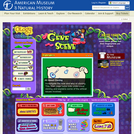
This fun Web site is part of OLogy, where kids can collect virtual trading cards and create projects with them. Here, they learn about the human genome project by clicking through an online slide show, hosted by kids, that answers these questions: What's a genome, anyway?What is the human genome project? What does it mean to me?